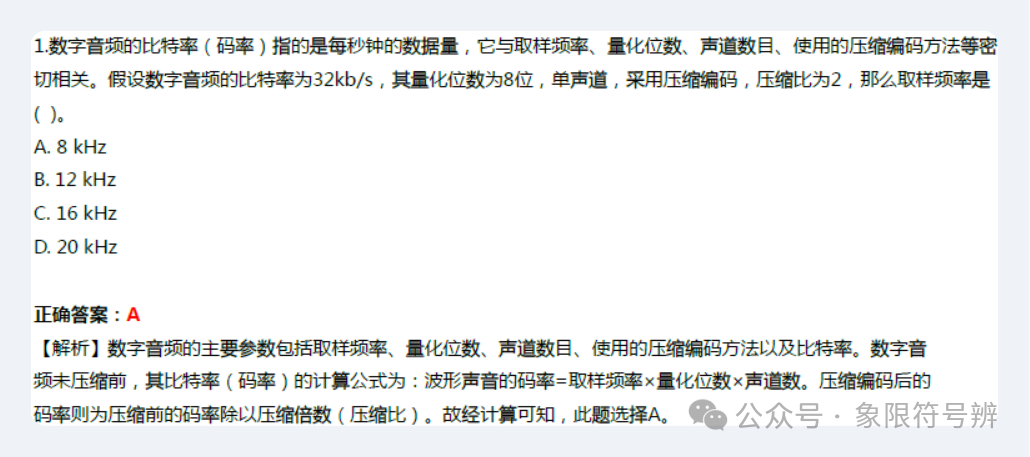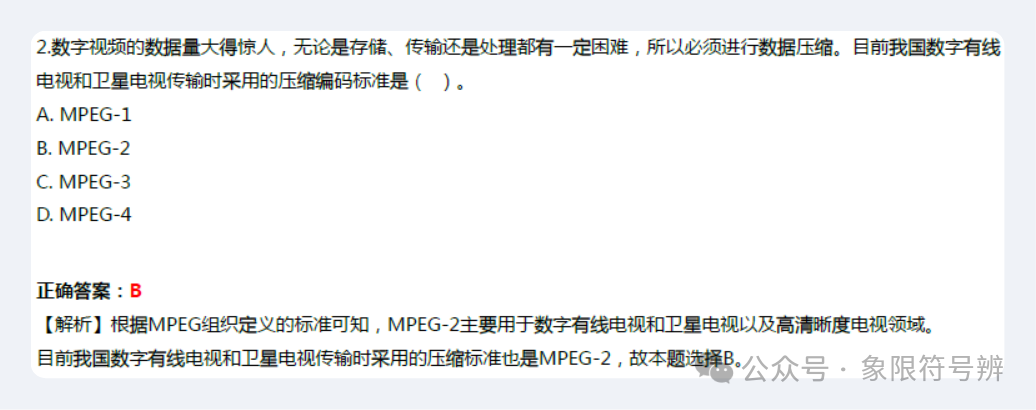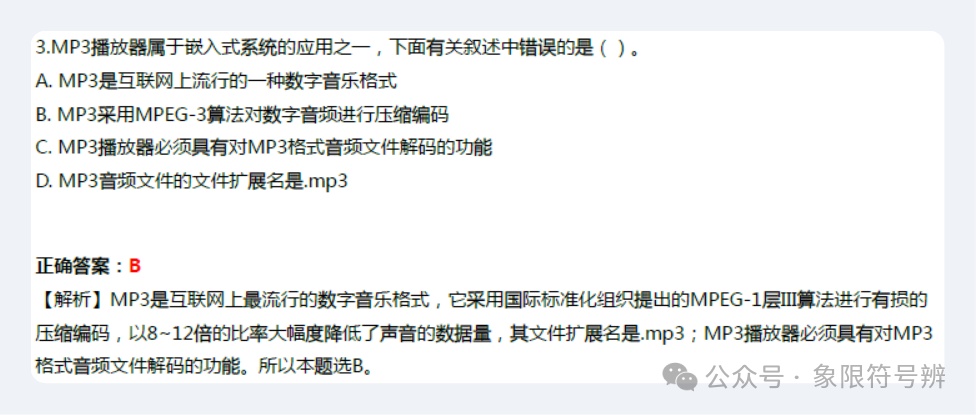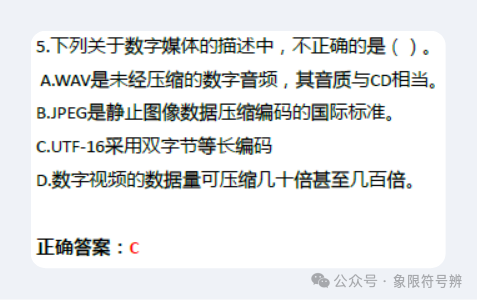Key Knowledge Points in Chapter One:
Understand the characteristics, classifications, development, and applications of embedded systems, and be familiar with the logical components of embedded systems.
Understand the main types of embedded processing chips, be familiar with the SoC development process, and comprehend the significant importance of IP cores.
Be familiar with the coding of Chinese and Western characters and the types and processing of digital text, and master the parameters, file formats, and main applications of digital images.
Understand the classification and composition of computer networks, be familiar with the main content of the IP protocol, and master the composition of the Internet and commonly used access technologies.
Audio refers to sound signals audible to the human ear, while video generally refers to sequences of moving images. Both are important media for transmitting information. A common characteristic is that the content changes over time, hence they are also referred to as dynamic media.
1. Digitization of Audio/Video Information
Audio is an analog signal with a frequency range of 20 Hz to 20 kHz. To process it using a computer, it must be converted into a binary encoded representation, a process known as digitization of sound signals.
The process of digitizing sound signals is as follows:
-
• Sampling: Discretizing a continuous sound signal into a series of discrete samples; -
• Quantization: Quantization is converting each sample’s analog value into a digital value, hence the quantization process is often referred to as A/D conversion; -
• Encoding: The data obtained after sampling and quantization must be compressed to reduce the data size and organized into a file format for easier storage, processing, and transmission by computers.
The process of digitizing video signals is somewhat more complex than that of audio, as it operates on individual frames.
2. Common File Formats and Applications for Digital Audio
The main parameters of digital audio include sampling frequency, quantization bit depth, number of channels, compression encoding methods used, and bit rate; the bit rate, also known as data rate, refers to the amount of data per second. Before compression, the bit rate for uncompressed digital audio can be calculated as follows:
Note:
The bit rate after compression is the bit rate before compression divided by the compression ratio.
The main parameters of digital voice transmitted over wired telephone trunk lines and long-distance lines, and high-fidelity full-band stereo digital sound recorded on CD are as follows:
|
|
|
|
|
|
|
|
|
|
|
|
|
|
|
|
|
|
|
|
|
3. Common File Formats and Applications for Digital Audio
The commonly used digital audio file formats, encoding types, and their main applications are shown in the table below:
|
|
|
|
|
|
|
|
|
|
|
|
|
|
|
|
|
|
|
|
|
|
|
|
|
|
|
|
|
|
|
|
|
|
|
|
|
|
|
|
|
|
|
|
|
|
|
|
|
|
|
|
|
|
|
|
|
|
|
|
|
|
|
The data volume of digital video is astonishingly large. The data volume for 1 minute of standard definition (resolution 720×576) video is about 1GB, which poses significant challenges for storage, transmission, and processing, necessitating data compression; international standards for video compression encoding and their applications are listed in the following table:
| Name | Source Image Format | Compressed Bit Rate | Main Applications |
|
|
|
|
|
|
|
|
|
|
|
|
|
|
|
|
|
|
|
|
|
|
|
|
|
|
|
|
|
|
There are various file formats for digital video and accompanying audio, such as:
-
• International standard MPEG formats (.dat, .mpg, .mpeg, .mp4, .vob, .3gp, .3g2, etc.). -
• Microsoft’s AVI (.avi) and ASF (.asf) formats (the latter is suitable for streaming applications). -
• Apple’s QTFF format (.mov and .qt). -
• DivX’s DivX (.divx) format. -
• Real Networks’ RM (.rm) and RMVB (.rmvb) formats (the .RMVB format is an extension of .RM, utilizing the H.264/MPEG-4 AVC algorithm, enhancing variable bit rate encoding capabilities, outperforming DivX and Xvid; many videos on the internet are currently in RMVB format). -
• Adobe’s FLV (.flv) and F4V (.f4v) formats, as well as the open-source Matroska format (.mkv), etc.
Note:
.asf, .wmv, .mov, .rm, .rmvb, .flv, and .f4v formats all support streaming, allowing for real-time audio/video streaming and playback over the internet, meeting the needs for live streaming, video on demand, and video conferencing applications, and have seen widespread use.
Sample Questions





Alright, that concludes this content.
Thank you for reading, and feel free to like, follow, and share
See you next time!
